Monique Snyman's Blog, page 4
April 25, 2025
Weird Tales: The Tragic Exorcism of Anneliese Michel Where Faith and Obsession Collided
The exorcism of Anneliese Michel isn���t just one of the most disturbing cases in modern history, it���s one that continues to raise difficult questions about the collision of faith, medicine, and personal belief. In 1970s Germany, a young woman who was diagnosed with epilepsy became the subject of 67 sanctioned exorcisms ��� Needless to say, she didn���t survive them.
The debate over what really happened ��� demonic possession or untreated mental illness ��� has never fully gone away. And maybe it never will.
Table of Contents
ToggleA Quiet Life, a Violent ShiftExorcism as TreatmentWhat the Courts DecidedLegacy or Cautionary Tale?
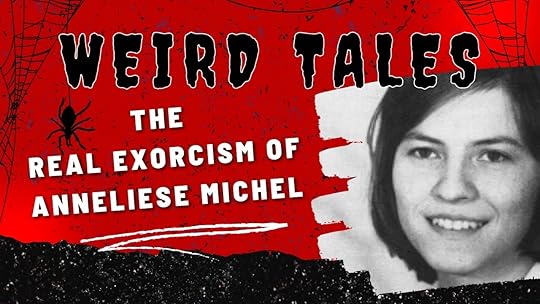
Anneliese Michel grew up in a small Bavarian town, part of a deeply religious Catholic family. Her life took a sharp turn in her teenage years, however, when she began experiencing seizures. Doctors diagnosed her with temporal lobe epilepsy, a condition which is known to cause vivid hallucinations, intense emotions, and, in some cases, a kind of religious intensity.
But her symptoms went beyond what doctors ��� or her community ��� seemed able to explain. Over time, her behavior grew increasingly erratic. She began hearing voices, became aggressive, and reportedly saw demonic faces. Desperate for answers, her parents turned away from medicine and toward the Church. They were convinced something darker was at play.
Exorcism as TreatmentBy 1975, Anneliese had stopped responding to medication. At least, that���s how it appeared. Her family and two priests, Father Ernst Alt and Father Arnold Renz, believed she was possessed. Over ten months, they conducted 67 exorcisms, some lasting hours. She was subjected to prayers, physical restraint, and long periods without food.
She became emaciated, bruised, and withdrawn. Audio recordings from the sessions, which are still available online, reveal her screaming for hours, her voice distorted and raw. By mid-1976, she weighed just 68 pounds.
Annaliese died in her home on July 1 from malnutrition and dehydration.
What the Courts DecidedThe fallout was immediate. Her parents and the priests were charged with negligent homicide. During the 1978 trial, arguments bounced between science and faith. The prosecution pointed to epilepsy and psychosis. The defense insisted that possession was real, and that Anneliese had asked for the exorcisms herself.
In the end, the priests received suspended prison sentences. The parents were spared punishment. The court acknowledged that everyone involved believed they were helping her.
But belief didn���t save her. And the medical system, by then pushed aside, never had the chance to ���
Legacy or Cautionary Tale?In the years since, Anneliese Michel���s story has been fictionalized, analyzed, and mythologized. Films like The Exorcism of Emily Rose were loosely based on her case, further blurring the line between fact and fiction. Religious groups saw her as a martyr. Skeptics saw a system failure.
And somewhere in the middle is the truth of a young woman who suffered, perhaps from a treatable illness, perhaps from something we still don���t fully understand, and died because no one could agree on how to help her.
Her story endures because it forces a confrontation. Between science and superstition. Between care and conviction. Between the idea of evil, and the more mundane, more tragic reality of being misunderstood.
April 23, 2025
Writing Tip: How to Build Dread Without Gore
Blood is easy. Dread takes skill.
Anyone can toss a bucket of red paint at a scene and call it horror, but building that stomach-knotting, can���t-look-away tension, the kind that keeps readers flipping pages and checking their locks at night, requires a different approach. You don���t need mutilation to make people squirm. You need atmosphere, implication, and the slow, deliberate art of making the reader feel like something is very, very wrong ��� even when nothing has technically happened. Yet.
So how do you do it? How do you conjure dread without splashing guts across the page? Here���s how I approach it.
Set the Mood and Then Hold It There
Atmosphere is everything. Before you can make your reader afraid of what���s lurking in the shadows, you need to make them notice the shadows. The key is to build a world that feels slightly askew ��� where things are off, but not outright alarming. Think odd silences. Half-open doors. A photograph that keeps falling off the wall no matter how often it���s rehung.
You���re not trying to scare them yet. You���re just nudging them out of their comfort zone. It���s that subtle, uneasy feeling that something is watching from the edges of the page.
Sensory detail helps here, but keep it restrained. The whisper of wind under a door. The distant sound of dripping water in an otherwise silent house. That faint hum you think might be in your head but could just as easily be coming from inside the walls. Less is more. Precision is everything.
Make the Ordinary Unsettling
There���s nothing creepier than the familiar behaving strangely. A perfectly normal object in the wrong place. A neighbor standing in their garden at 2 AM, barefoot and unmoving. A child���s toy going off long after the batteries were removed.
Don���t explain it. Not yet. The unknown is far more powerful than the known.
Dread lives in the space between certainty and confusion. It���s that moment when your character walks into their home and something feels different, but they can���t say why. Maybe the light is on when it shouldn���t be. Maybe the air feels heavier than usual. Maybe their pet won���t stop staring at the hallway.
The moment you give them (and your reader) a clear reason for the weirdness, you kill the dread. So, don���t. Let the reader sit in that discomfort. Let them fill in the blanks with their own fear.
Use Your Pacing Like a Weapon
Fast pacing creates adrenaline. Slow pacing creates anxiety. When you’re building dread, you want your story to crawl ��� but with intention.
Linger in scenes longer than you should. Describe the empty hallway a little too much. Drag out conversations just past the point of comfort. Use short, clipped sentences when your character���s thoughts are spiraling, but don���t rush them toward a resolution.
Let tension tighten like a rope. Then let it stay taut.
Also? Silence. Don���t underestimate the power of a well-placed beat. A moment where nothing happens. A pause between dialogue. A breath held too long. These are your best friends when writing dread.
Let the Reader Get Ahead of the Characters
Give your reader just enough information to feel nervous for your protagonist. Not a full reveal, just a sliver. Maybe we know there���s something behind the door that the character���s about to open, but we don���t know what. That knowledge imbalance creates immediate, unbearable tension.
Better yet, make your characters start to doubt themselves. Make them feel like something is off, too. When your protagonist begins questioning their own senses, readers will lean in closer, waiting to see if they���re right ��� or if they���re just unraveling.
(And hey, maybe they���re both.)
Don���t Answer Every Question
Horror loses its grip when you explain too much. You don���t need to tie everything up with a neat bow. In fact, dread thrives in ambiguity.
Leave some things open. Let a few details remain unresolved. That weird noise in the attic? Maybe we never find out what caused it. The figure in the mirror? Maybe it���s never acknowledged again. Those are the things that haunt readers long after the book is done.
We fear what we don���t understand. So don���t hand it to your readers.
Save the Big Bang for When It Hurts the Most
If you do decide to include a violent or shocking moment, make it matter. Make it land hard because of all the quiet dread that came before it. Don���t open with a scream. Let it build. Let it build so well that when something finally happens, the reader���s already emotionally frayed, and the impact is unforgettable.
But you don���t have to show the moment of impact. Sometimes the cutaway is more brutal than the blood.
Final Thoughts
Dread is a slow burn. It���s a whisper in the dark, a shadow just out of frame, a truth your character almost uncovers before looking away. It doesn���t rely on shock or gore ��� it relies on the imagination. And honestly? That���s where real horror lives.
So next time you���re writing something scary, skip the guts. Go for the gut instead. Make it slow. Make it silent. Make it strange. And then let the reader squirm.
Because dread isn���t what you show. It���s what you don���t.
April 22, 2025
A Taut, Twisted Portrait of a Family Unraveling in Little Ghosts
Gregg Dunnett���s Little Ghosts digs deep under the skin and lingers, festering. Months after finishing the book, you���ll still think of this rare thriller, not because it���s loud or over the top, but because it���s rooted in something far more powerful ��� the emotional wreckage of grief. What begins as a quiet exploration of a family in mourning quickly morphs into something darker, stranger, and deeply unsettling ���
What Dunnett does so well is show how loss doesn���t sit quietly in the past. It seeps into everything you know and everything you are. And just when you think you���ve figured out what kind of story this is, it shifts ��� subtly, at first, then completely.
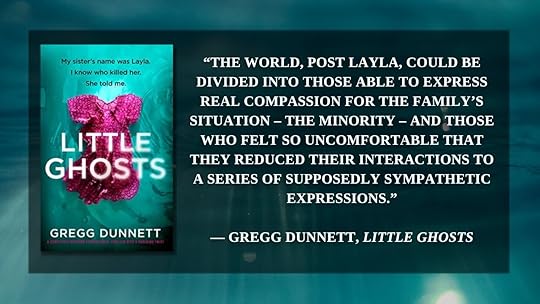
Rachel and Jon Martin are barely holding things together. Their son, Gale, is navigating childhood with a shadow hanging over it. But sometimes, shadows don���t stay in the dark. Sometimes, they turn into monsters, real-life monsters. The question is, will this family survive those monsters?
Dunnett excels at crafting characters who feel like real people caught in impossible situations. Rachel���s fragility is matched by a ferocious instinct to protect. Jon is pragmatic and emotionally checked out in ways that feel maddeningly believable. And Gale��� Gale is the heart of this book. He���s sensitive, observant, and just off-kilter enough that you���re never entirely sure what���s real and what isn���t. It���s through his eyes that the story takes on a darker, almost dreamlike quality.
Then there���s the investigator. He���s not your standard stock detective. There���s something about him that feels just a little off, and the way he threads into the story adds another layer of tension that builds until it���s impossible to ignore.
Reality Slips and the Tension BuildsWhat sets Little Ghosts apart from other thrillers is how quietly it builds its suspense. There are no cheap tricks here ��� just a slow, creeping dread and the constant sense that something is slightly out of place. Gale begins to sense things that shouldn���t be there. Rachel���s intuition keeps sounding alarm bells. And as the threads start to pull tighter, what emerges isn���t just a mystery, it���s a psychological freefall.
There���s a fine line between the supernatural and the imagined in this book, and Dunnett walks it masterfully. You’re never quite sure what���s real, what���s memory, and what���s being projected by trauma. It���s this ambiguity that keeps the pages turning, because the truth feels close enough to touch but just out of reach, too.
An Unsettling, Unshakable ReadLittle Ghosts is the kind of novel that rewards patient, attentive readers. It���s layered, emotional, and deeply human. Yes, it���s a thriller. But it���s also a story about how people survive the unthinkable, how they fracture, and how they carry on ��� haunted, but moving forward. The writing is clean and precise, with enough emotional punch to make even the quiet moments hit hard.
Dunnett doesn���t waste a single sentence. Every scene serves a purpose, every interaction leaves a mark, and the payoff is well worth the slow burn. It���s not just the tension that makes this book work; it���s the emotional authenticity, the characters you want to shake and protect, and the ever-present feeling that the past isn���t done with any of them yet.
This is one of the best psychological thrillers I���ve read in a while. If you want something immersive, tense, and genuinely affecting, Little Ghosts is it.
About the Author Gregg Dunnett is a British author writing psychological thrillers and stories about travel and adventure, usually with a connection to the coast or to the oceans. Before turning to novels he worked as a journalist for ten years on a windsurfing magazine, briefly owned a sailing school in Egypt, taught English in Thailand, Portugal, Turkey and Italy, taught sailing in Greece and Spain, and also had several rather duller jobs along the way.
Gregg Dunnett is a British author writing psychological thrillers and stories about travel and adventure, usually with a connection to the coast or to the oceans. Before turning to novels he worked as a journalist for ten years on a windsurfing magazine, briefly owned a sailing school in Egypt, taught English in Thailand, Portugal, Turkey and Italy, taught sailing in Greece and Spain, and also had several rather duller jobs along the way.
His brother is the adventurer Jono Dunnett who in 2015 windsurfed alone and unsupported around the entire coastline of Great Britain, and who is currently windsurfing around the coastline of Europe.
Gregg lives in Bournemouth on the south coast of England with his partner Maria. They have two young children, Alba and Rafa, for whom the phrase ���Daddy���s working��� has absolutely no effect.
Gregg���s debut novel was an Amazon top 100 best seller in the UK and was downloaded over a quarter of a million times.
April 21, 2025
Patient X and the Yellow Room Nobody Talks About
In the late 19th century, a woman���s descent into madness was often met with vague diagnoses, well-meaning but misguided treatments, and a complete disregard for her autonomy. The Yellow Wallpaper by Charlotte Perkins Gilman illustrates the harrowing effects of such neglect. Even though The Yellow Wallpaper is often regarded as fiction, it serves as an unnervingly accurate depiction of a case study that could have easily occurred in real life.
What follows is a mock psychological analysis of Patient X ��� the unnamed protagonist of Gilman���s story, who is subjected to a prescribed ���rest cure��� that ultimately leads to a complete psychological break. Here, we revisit her journey, not as a fictional narrative, but as a chilling case of how environmental triggers, emotional neglect, and coercive control can manifest in the most destructive of ways.
Table of Contents
ToggleInitial Presentation and Environmental TriggersObserved Behaviors and Clinical ImpressionsFinal Notes: Unraveling in Pattern and SilenceInitial Presentation and Environmental TriggersPatient X, female, mid-to-late twenties, was relocated to a secluded country estate following a vague diagnosis of ���temporary nervous depression.��� Referring physician (husband) prescribed total rest, isolation, and a strict regimen devoid of creative output. Patient was removed from urban life, friends, professional work, and ��� crucially ��� any outlet for emotional processing or self-expression.
The designated recovery room was not neutral. Despite Patient X requesting a different space, she was assigned to a former nursery with barred windows, peeling yellow wallpaper, and a nailed-down bed. Initial notes indicate discomfort with the d��cor: ���unpleasant,��� ���unreliable,��� and ���revolting��� are terms she used early on. These descriptors escalate across time into more visceral responses ��� ���sickly,��� ���smouldering,��� ���infected.���
Environmental psychology recognizes the influence of space on cognition. A recent study on sensory deprivation found that prolonged exposure to distorted or decaying visual stimuli ��� especially in conditions of social isolation ��� can induce a loss of reality testing. Patient X���s descent into psychosis is not anomalous but contextual.
Observed Behaviors and Clinical ImpressionsPatient X’s initial journals reflect a passive tone: self-effacing, obedient, trusting in her prescribed care. But across a three-week period, entries evolve in clarity, emotional charge, and focus ��� centering more and more on the wallpaper. Descriptions become obsessive. She begins tracking the pattern’s movement, identifying a sublayer, and finally perceiving a woman ���creeping��� behind it.
This hallucinatory fixation meets the diagnostic criteria for a dissociative psychotic break, potentially catalyzed by extreme emotional repression. According to DSM-5, persecutory delusions are common when the patient perceives authority figures as controlling or invalidating. Here, the husband doubles as caregiver and jailor, invalidating her feelings while reinforcing isolation. He infantilizes her, calling her ���blessed little goose��� and refusing her agency. These behaviors are consistent with covert coercive control.
Patient X���s physicality also shifts. She stops sleeping at night. She spends hours tracing the wallpaper���s paths. She begins crawling along the floor. In criminological profiling, we refer to this as ���environmental mimicry��� ��� where the individual, stripped of identity, begins to mirror the conditions of their environment. In this case, the rotting pattern becomes a model for her internal chaos.
By week four, she reports having ���freed��� the woman behind the wallpaper. The shift in pronouns ��� from ���she��� to ���we��� ��� suggests complete psychological merger. This is symbolic matricide, where the repressed self (the woman behind the wallpaper) must ���kill off��� the socially acceptable self in order to survive.
Final Notes: Unraveling in Pattern and SilenceWhat makes Patient X���s case disturbing isn���t just the psychosis. It���s the quiet. The silence in which she deteriorates. The silence enforced by a husband who believes love is control. The silence mirrored in medical journals of the time that erased female voices under vague labels like ���hysteria.���
If we reframe this story through a modern psychological lens, what we���re really seeing is the unravelling of someone never allowed to be whole in the first place. Patient X had no access to autonomy, creative release, or therapeutic alliance. Every possible exit ��� literal or metaphorical ��� was locked.
This is not just a gothic ghost story. It���s a forensic case study in how environmental oppression, emotional neglect, and unrelenting power dynamics become fertile ground for madness.
When the final scene unfolds, with Patient X crawling over her unconscious husband, she is not just broken ��� she���s reborn. This act of crawling is no longer one of submission but resistance. She is no longer creeping behind the pattern. She is the pattern. And she is not going back.
April 19, 2025
Killer Bunnies and Occult Eggs: When Easter Gets Weird in Fiction
Easter usually conjures up soft pastels, overflowing baskets of chocolate, and fuzzy bunnies hopping into spring. But beneath that cheery exterior lies a treasure trove of unsettling stories that warp the season���s themes of rebirth and renewal into something far more twisted. In fiction, Easter isn���t always sunshine and tulips ��� Nay-nay, dear reader, it can be a portal to the uncanny, the occult, and the bizarre ��� if you know where to look.
So, if you���re more into haunted hollows than Easter hunts, you���re in good company! Without further ado, let���s peel back the foil on those sugary symbols and sink our teeth into some delightfully dark springtime storytelling.
Table of Contents
ToggleFluffy, Feral, and Fanged: Rabbits That Haunt UsPagan Rites, Spring Sacrifices, and Horror in BloomMore Spring Fiction, But Make It Haunted
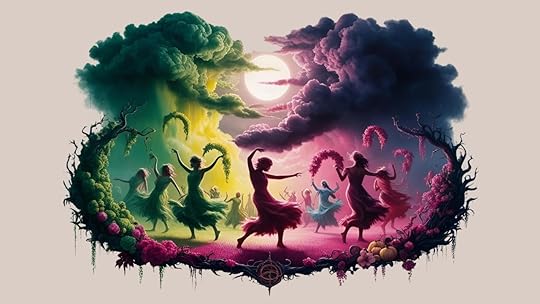
Rabbits have become symbols of innocence and fertility, but in fiction, the bunny trope has taken on a deliciously disturbing twist.
Let���s start with Donnie Darko, a cult classic film featuring Frank, a towering, cryptic bunny that���s equal parts prophet, time traveler, and harbinger of doom. Frank isn���t handing out candy; he���s whispering apocalyptic countdowns and messing with the very fabric of reality. This is the Easter Bunny���s shadow self, and it���s a cult classic for a reason!
Then there���s Watership Down by Richard Adams. On the surface, it���s a story about a group of rabbits searching for a new warren. Burrow a bit deeper, however, and it���s a brutal allegory about war, fascism, and survival. These aren���t fluffy pets: they���re soldiers, refugees, and prophets navigating an indifferent world. If you ever doubted that rabbits could be horrifying, this novel will change your mind.
And let���s not forget Bunnicula, the vampire bunny from the children’s classic by Deborah and James Howe. He drains the juice from vegetables and sends the household pets into a spiral of paranoia. It’s playful, yes, but also a surprisingly smart nod to horror tropes ��� campy, clever, and just creepy enough to stick with you.
Pagan Rites, Spring Sacrifices, and Horror in BloomEaster���s roots lie in ancient fertility festivals ��� springtime rites, symbols of rebirth, and yes, eggs. But dark fiction loves to sink its claws into those same themes and turn them inside out.
Take The Wicker Man (1973). Though technically a film, it embodies everything weird and chilling about springtime cults. A devout police officer investigates a missing girl on a remote island, only to discover the community celebrates pagan traditions that involve far more than eggs and garlands. It���s cheerful on the surface, but it simmers with unease and culminates in a scene that redefines “burning man.”
Or consider Shirley Jackson���s The Lottery. Every spring, a small, seemingly wholesome village gathers for an annual ritual that ends in shocking violence. There���s no pastel palette here ��� just the horror of blind tradition and the tension of community complicity. It���s about sacrifice, sure, but not the kind the Easter Bunny would endorse.
Even in sci-fi and horror-adjacent fiction, eggs aren���t always symbols of new life. Sometimes, they���re vessels for something unholy (Alien, we see you). The egg becomes a metaphor for what lies dormant and unknown ��� gestating horrors that crack open at the worst possible moment.
More Spring Fiction, But Make It HauntedIf you���re building your own haunted spring reading list, these books offer the perfect blend of creepy and clever:
Bunny by Mona Awad: Imagine an MFA writing program where the girls wear matching cardigans and casually create monstrous creatures out of thin air. It���s culty, twisted, and pastel-drenched in the best way. House of Hollow by Krystal Sutherland: Gorgeous, eerie, and dripping with rot. Think lost girls, strange disappearances, and the kind of springtime horror that blooms like black mold under flower petals. The Ritual by Adam Nevill: A springtime hike gone horribly wrong, featuring a terrifying forest, pagan relics, and a god-thing you���ll never forget. It’s The Blair Witch Project meets Norse folklore.The bottom line? Spring might be the season of sunshine and blossoms, but in fiction, it���s also when things start to hatch, and not everything that breaks free from its shell is cute.
BookStrology Weekly Forecast: April 21 â April 27, 2025
Let the stars pick your poison! I first launched my BookStrology section back in February 2024 with starry-eyed ambition and a TBR pile that could rival the rings of Saturn. But between writing deadlines, toddler wrangling, and the occasional existential spiral, I never quite found the time to let it fully bloom … until now.
So, welcome back, dear bibliophile. Whether youâve got Mercury in meltdown or Venus playing matchmaker, Iâm here to help you navigate the week ahead â one eerie, enchanting, or emotionally devastating book at a time.
Table of Contents
ToggleBOOKSTROLOGY April 21 – April 27, 2025 Aries
Aries Taurus
Taurus Gemini
Gemini Cancer
Cancer Leo
Leo Virgo
Virgo Libra
Libra Scorpio
Scorpio Sagittarius
Sagittarius Capricorn
Capricorn Aquarius
Aquarius Pisces
Pisces
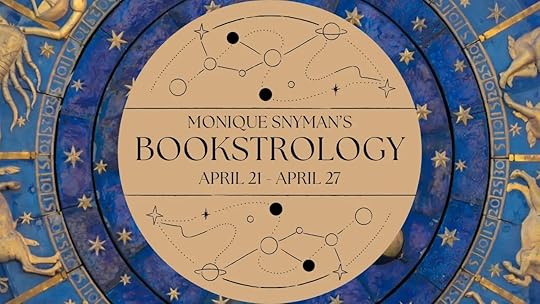
April 21 – April 27, 2025
 Aries
Aries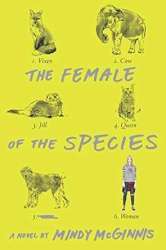
This week: You’re not angry, just … passionately correct.
Mars is pushing your buttons, and everyone else should be worried. The energy is intense, impulsive, and weirdly inspiring. Channel your feral determination into a story where justice and chaos collide.
Read: The Female of the Species by Mindy McGinnis
Because sometimes the only way to heal is to break everything.
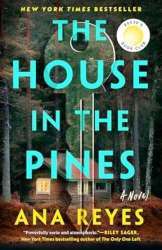
 Taurus
TaurusThis week: Still waters run deep â and might be boiling.
Venus wants you to seek beauty, but Saturnâs watching from the shadows, whispering, âLet it hurt.â This is the week to indulge your softest desires and your sharpest doubts.
Read: The House in the Pines by Ana Reyes
Mysterious, slow-burning, and full of hidden truths â just like you.
 Gemini
Gemini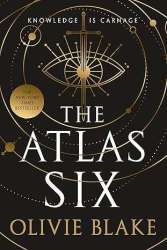
This week: Thereâs a difference between collecting information and spiraling.
Your ruling planet, Mercury, is still sorting through its cosmic inbox. Expect glitches, déjà vu, and maybe a ghost or two. Read something that matches your scattered brilliance.
Read: The Atlas Six by Olivie Blake
Magic, manipulation, and morally gray academics? Yes, please.
 Cancer
Cancer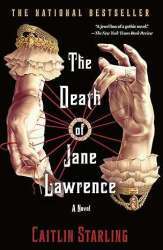
This week: Your intuition is screaming â are you listening?
That full moon in fellow water sign Scorpio is a call to emotional arms. If it feels like your dreams are haunted, itâs because they are. Time to read something drenched in gothic yearning.
Read: The Death of Jane Lawrence by Caitlin Starling
A slow descent into madness, love, and locked doors.
 Leo
Leo
This week: You’re the main character, but not everyone got the memo.
The sunâs shifting energy has you questioning your spotlight. Maybe it’s time to step behind the curtain and see what happens in the shadows.
Read: Bunny by Mona Awad
Surreal, culty, and disturbingly pink. Itâs giving unhinged brilliance.
 Virgo
Virgo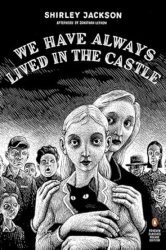
This week: Your checklist canât save you from the existential dread.
Youâve been trying to make sense of the chaos, but what if itâs not meant to be organized? This is your week to read something beautifully messy.
Read: We Have Always Lived in the Castle by Shirley Jackson
Sisters, suspicion, and solitude. A study in eerie elegance.
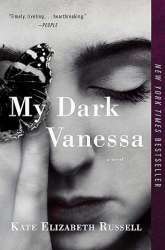
 Libra
LibraThis week: The scale is tipping, and youâre not sure which side youâre on.
With Venus in tension, your relationships are feeling like Greek tragedies. Read something that understands the complicated art of keeping the peace ⦠and what happens when it breaks.
Read: My Dark Vanessa by Kate Elizabeth Russell
Uncomfortable, unflinching, and devastatingly introspective.
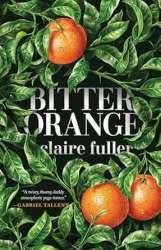
 Scorpio
ScorpioThis week: Youâre not unravelling â youâre molting.
The full moon is in your sign, and things are about to get intense. Youâre not afraid of transformation, but even you might feel this one. Read something that invites obsession.
Read: Bitter Orange by Claire Fuller
Secrets, summer heat, and a crumbling estate hiding everything you need to know.
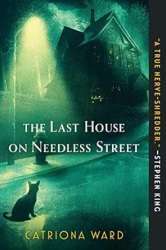
 Sagittarius
SagittariusThis week: Youâre ready to burn bridges just to see the light.
Freedom is your anthem, but what if staying still is the revolution? Itâs a week for internal journeys, existential questions, and dark roads that might lead home.
Read: The Last House on Needless Street by Catriona Ward
Nothing is what it seems. Including you.

 Capricorn
CapricornThis week: Youâve built walls, but ghosts donât need doors.
Youâre focused on structure and legacy, but emotions have been knocking, and this week they break in. Read something that shows the cracks beneath the control.
Read: Plain Bad Heroines by Emily M. Danforth
Academia, horror, queer love, and cursed manuscripts? Youâll feel seen.
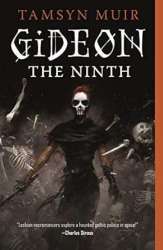
 Aquarius
AquariusThis week: You’re detached, not emotionless. Maybe.
Your weird little brain is on fire, but your heart has a few thoughts too. Expect dreams, strange signs, and the urge to rebel against something â even if it’s yourself.
Read: Gideon the Ninth by Tamsyn Muir
Lesbian necromancers in space? Obviously.
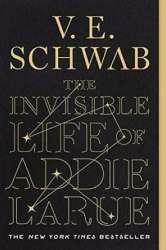
 Pisces
PiscesThis week: You are the ocean pretending to be a puddle.
Your empathy is both a gift and a curse. This week, it feels like you’re absorbing too much. Read something that validates your weirdness while anchoring your soul.
Read: The Invisible Life of Addie LaRue by V.E. Schwab
Because eternity is lonely, but youâre never really alone.
Let the stars be your bookseller, and may your week be full of haunted prose, slow-burn plot twists, and characters who feel a little too familiar. See you next Monday for another round of cosmic recommendations.
BookStrology Weekly Forecast: April 21 ��� April 27, 2025
Let the stars pick your poison!��I first launched my BookStrology section back in February 2024 with starry-eyed ambition and a TBR pile that could rival the rings of Saturn. But between writing deadlines, toddler wrangling, and the occasional existential spiral, I never quite found the time to let it fully bloom … until now.
So, welcome back, dear bibliophile. Whether you���ve got Mercury in meltdown or Venus playing matchmaker, I���m here to help you navigate the week ahead ��� one eerie, enchanting, or emotionally devastating book at a time.
Table of Contents
ToggleBOOKSTROLOGY April 21 – April 27, 2025 Aries
Aries Taurus
Taurus Gemini
Gemini Cancer
Cancer Leo
Leo Virgo
Virgo Libra
Libra Scorpio
Scorpio Sagittarius
Sagittarius Capricorn
Capricorn Aquarius
Aquarius Pisces
Pisces

April 21 – April 27, 2025
 Aries
Aries
This week: You’re not angry, just … passionately correct.
Mars is pushing your buttons, and everyone else should be worried. The energy is intense, impulsive, and weirdly inspiring. Channel your feral determination into a story where justice and chaos collide.
Read: The Female of the Species by Mindy McGinnis
Because sometimes the only way to heal is to break everything.

 Taurus
TaurusThis week: Still waters run deep ��� and might be boiling.
Venus wants you to seek beauty, but Saturn���s watching from the shadows, whispering, ���Let it hurt.��� This is the week to indulge your softest desires and your sharpest doubts.
Read: The House in the Pines by Ana Reyes
Mysterious, slow-burning, and full of hidden truths ��� just like you.
 Gemini
Gemini
This week: There���s a difference between collecting information and spiraling.
Your ruling planet, Mercury, is still sorting through its cosmic inbox. Expect glitches, d��j�� vu, and maybe a ghost or two. Read something that matches your scattered brilliance.
Read: The Atlas Six by Olivie Blake
Magic, manipulation, and morally gray academics? Yes, please.
 Cancer
Cancer
This week: Your intuition is screaming ��� are you listening?
That full moon in fellow water sign Scorpio is a call to emotional arms. If it feels like your dreams are haunted, it���s because they are. Time to read something drenched in gothic yearning.
Read: The Death of Jane Lawrence by Caitlin Starling
A slow descent into madness, love, and locked doors.
 Leo
Leo
This week: You’re the main character, but not everyone got the memo.
The sun���s shifting energy has you questioning your spotlight. Maybe it’s time to step behind the curtain and see what happens in the shadows.
Read: Bunny by Mona Awad
Surreal, culty, and disturbingly pink. It���s giving unhinged brilliance.
 Virgo
Virgo
This week: Your checklist can���t save you from the existential dread.
You���ve been trying to make sense of the chaos, but what if it���s not meant to be organized? This is your week to read something beautifully messy.
Read: We Have Always Lived in the Castle by Shirley Jackson
Sisters, suspicion, and solitude. A study in eerie elegance.

 Libra
LibraThis week: The scale is tipping, and you���re not sure which side you���re on.
With Venus in tension, your relationships are feeling like Greek tragedies. Read something that understands the complicated art of keeping the peace ��� and what happens when it breaks.
Read: My Dark Vanessa by Kate Elizabeth Russell
Uncomfortable, unflinching, and devastatingly introspective.

 Scorpio
ScorpioThis week: You���re not unravelling ��� you���re molting.
The full moon is in your sign, and things are about to get intense. You���re not afraid of transformation, but even you might feel this one. Read something that invites obsession.
Read: Bitter Orange by Claire Fuller
Secrets, summer heat, and a crumbling estate hiding everything you need to know.

 Sagittarius
SagittariusThis week: You���re ready to burn bridges just to see the light.
Freedom is your anthem, but what if staying still is the revolution? It���s a week for internal journeys, existential questions, and dark roads that might lead home.
Read: The Last House on Needless Street by Catriona Ward
Nothing is what it seems. Including you.

 Capricorn
CapricornThis week: You���ve built walls, but ghosts don���t need doors.
You���re focused on structure and legacy, but emotions have been knocking, and this week they break in. Read something that shows the cracks beneath the control.
Read: Plain Bad Heroines by Emily M. Danforth
Academia, horror, queer love, and cursed manuscripts? You���ll feel seen.

 Aquarius
AquariusThis week: You’re detached, not emotionless. Maybe.
Your weird little brain is on fire, but your heart has a few thoughts too. Expect dreams, strange signs, and the urge to rebel against something ��� even if it’s yourself.
Read: Gideon the Ninth by Tamsyn Muir
Lesbian necromancers in space? Obviously.

 Pisces
PiscesThis week: You are the ocean pretending to be a puddle.
Your empathy is both a gift and a curse. This week, it feels like you’re absorbing too much. Read something that validates your weirdness while anchoring your soul.
Read: The Invisible Life of Addie LaRue by V.E. Schwab
Because eternity is lonely, but you���re never really alone.
Let the stars be your bookseller, and may your week be full of haunted prose, slow-burn plot twists, and characters who feel a little too familiar. See you next Monday for another round of cosmic recommendations.
April 18, 2025
The September House Twists Haunted House Horror Into a Psychological Nightmare
Forget screaming final girls and frantic escape plans. In The September House by Carissa Orlando, Margaret Hartman — Maggie — does what any sensible woman would do when her dream home starts bleeding: she scrubs the floors, makes polite conversation with the ghosts, and keeps the place running.
She’s finally got what she always wanted: stability. After a childhood shaped by instability and a marriage that feels more like quiet survival, Maggie buys a gorgeous old Victorian with cobalt paint, white trim, and the promise of permanence.
Table of Contents
ToggleThen September Hits …You Can Normalize Anything, Even the BasementThis House Doesn’t Want You to Leave. And You Might Not Want To.About the Author
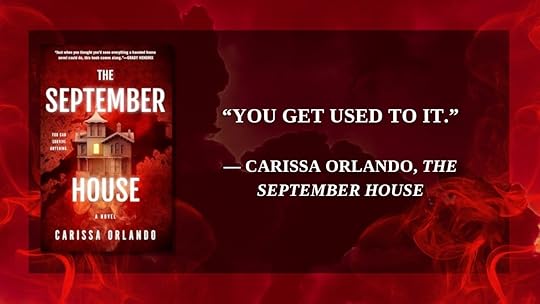
The walls drip blood. Ghosts drift through the halls. The basement locks itself tight. Maggie stays, though, because this is the house of her dreams. Her husband, Hal, however, bolts. And, honestly, who could blame him? Katherine, their daughter, comes back to investigate when she can’t get hold of her father and her mother keeps giving her the runaround, and finds a mother disturbingly unbothered by the escalating horror.
At face value, The September House may just be a haunted house novel. A good one. But I can confirm that it is far more than that … This book is a slow-burning, emotionally rich descent into the mind of a woman who has learned to live with monsters — both spectral and human … and readers will love every second of it.
You Can Normalize Anything, Even the BasementWhat makes Maggie unforgettable is her chilling composure. Where most people would scream, she quietly adapts. She sets house rules for the ghosts. She makes tea while the walls ooze. She hires Fredricka — a housekeeper with her own eerie vibe — and keeps her head down while the house howls.
When Hal disappears, Maggie barely flinches. It’s Katherine who rattles the cage, poking at secrets Maggie has long buried beneath routine and denial. Through Katherine’s return and unraveling investigation, we’re forced to confront just how deep Maggie’s trauma runs, and how much she’s internalized over the years.
The September House doesn’t yell. It doesn’t need to. The horror is quiet, personal, and razor-sharp. Maggie has lived through enough that the supernatural is almost soothing. At least ghosts follow rules.
This House Doesn’t Want You to Leave. And You Might Not Want To.The house itself is a living thing, a vessel for pain, violence, and everything Maggie doesn’t say out loud. It’s not just haunted; it’s orchestrated. Every September, the same cycle repeats. There’s a reason that the basement stays locked and why the ghosts return year after year.
As Katherine pushes deeper into the house’s history, the story of Theodore Vale — a former resident whose legacy is soaked in blood — comes into focus. But it’s not just his story that matters. It’s Maggie’s. Her steady decline, her refusal to leave, her unsettling calm … well, it’s all part of the atmosphere that makes this novel so haunting (and memorable). The September House isn’t a novel about escape, but rather about endurance. About surviving things so long they stop scaring you. And about how one woman’s silence can echo louder than any ghost.
The September House is a devastating read, but perfect for those who crave slow, intelligent horror steeped in emotional dread. Maggie isn’t trying to be brave. She’s just trying to keep the house clean and the world quiet.
And that’s what makes her terrifying.
About the Author Photo: © Cameron Massey
Photo: © Cameron MasseyCarissa Orlando has a doctorate in clinical-community psychology and specializes in work with children and adolescents. In her “day job,” Carissa works to improve the quality of and access to mental health care for children and their families. Prior to her career in psychology, Carissa studied creative writing in college and has written creatively in some form since she was a child. It was only a matter of time before Carissa, an avid horror fan for much of her life, merged her understanding of the human psyche and deep love for storytelling into a piece of fiction.
April 14, 2025
Identify Xenophobia and Challenge Prejudice with These 7 Books
Xenophobia is defined as: “the dislike of or prejudice against people from other countries,” which has sadly shaped societies for centuries. It is this irrational fear that has fueled policies, conflicts, and everyday injustices, and it is something we see every single day … Despite the lessons we (should have) learned from history, these prejudices remain deeply ingrained today, influencing everything from immigration laws to social divisions and acts of violence.
Literature ��� the good, bad, and sometimes ugly ��� helps us recognize these issues, and by challenging these biases and amplifying the voices of those affected, we can see the far-reaching consequences of xenophobia.
These 7 unforgettable books offer us valuable insight into the enduring power of exclusion and the strength required to resist it …
 They Called Us Enemy by George Takei
They Called Us Enemy by George TakeiTakei���s graphic memoir recounts his childhood in a Japanese American internment camp during World War II. His firsthand account of mass incarceration, which was sanctioned by a government driven by paranoia, serves as a stark reminder of how easily fear turns into persecution. The book connects past injustices to ongoing discrimination against marginalized communities today.
 All My Rage by Sabaa Tahir
All My Rage by Sabaa TahirThis novel follows Pakistani American teenagers struggling with grief, family expectations, and the realities of being Muslim in a post-9/11 world. Tahir exposes the daily impact of xenophobia, from racial profiling to economic hardship, while also addressing how generational trauma and cultural identity shape a person���s sense of belonging.
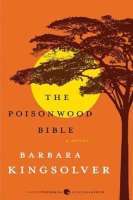 The Poisonwood Bible by Barbara Kingsolver
The Poisonwood Bible by Barbara KingsolverSet in the Belgian Congo, this novel follows a missionary family whose rigid beliefs and refusal to understand local customs reflect a colonial mindset built on superiority and fear. Kingsolver critiques the way Western arrogance breeds xenophobia, leading to cultural erasure, exploitation, and conflict.
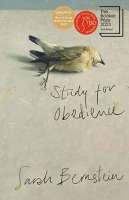 Study for Obedience by Sarah Bernstein
Study for Obedience by Sarah BernsteinWhen a woman moves to a remote community, she is met with suspicion and hostility, her Jewish identity marking her as an outsider. As she becomes the target of unspoken fears and collective blame, the novel explores how societies isolate and scapegoat those who don���t fit their norms. Bernstein���s eerie, atmospheric storytelling lays bare the weight of inherited prejudice and the pressure to conform.
 Our Missing Hearts by Celeste Ng
Our Missing Hearts by Celeste NgIn a dystopian America where anti-Asian policies are normalized, a boy searches for his mother, a dissident poet forced into hiding. Ng���s novel draws eerie parallels to real-world censorship, xenophobic rhetoric, and policies that frame immigrants as threats. The story highlights how easily societies justify oppression in the name of security.
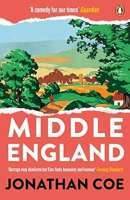 Middle England by Jonathan Coe
Middle England by Jonathan CoeSet against the backdrop of Brexit, Middle England explores the fractures within British society as nationalist sentiment rises and xenophobia fuels political division. Coe���s sharp, often satirical novel examines how fear of the ���other��� seeps into everyday conversations, reshapes personal relationships, and drives a country toward cultural and social upheaval.
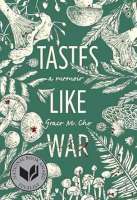 Tastes Like War by Grace M. Cho
Tastes Like War by Grace M. ChoCho���s memoir unpacks her mother���s experience as a Korean immigrant in a predominantly white town, where racism and isolation take a devastating toll on her mental health. By weaving together personal history and social commentary, Cho reveals how xenophobia doesn���t just alienate ��� it erodes a person���s sense of self, often with lifelong consequences.
How many of these books have you read? Do you have any other book recommendations on the topic that I may have missed? If so, leave me a comment and let me know!��
April 5, 2025
“Sunrise on the Reaping” Will Devastate and Emotionally Traumatize Fans
Sunrise on the Reaping by Suzanne Collins is the fifth book in The Hunger Games series, the second book if you read them in chronological order, but more importantly, it’s a cleverly written, emotionally traumatizing novel that reconceptualizes the original trilogy in ways that fans could never have dreamed possible …
Table of Contents
ToggleReaping DayMeeting Old Friends for the First TimeIt is Painful and NecessaryPropagandaWhat Comes Next: A TheoryBack to Haymitch
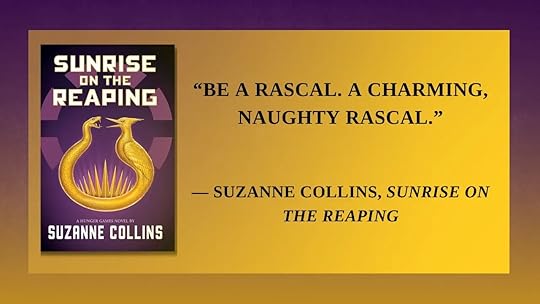
Sunrise on the Reaping starts with Haymitch Abernathy waking up on his sixteenth birthday, which just so happens to be Reaping Day, too. For those who don’t remember who Haymitch is, he would eventually go on to become the troubled, albeit beloved mentor to Katniss Everdeen and Peeta Mellark. But I digress … It’s Reaping Day, but Haymitch is more concerned about spending some time with his girlfriend, Lenore Dove, a Covey girl who has the same allure as Lucy Gray Baird.
Without giving away any spoilers, I can confirm that things don’t go as planned on the day of the 50th Hunger Games reaping. The theme of the Second Quarter Quell was choosing 4 tributes from each district. Here, we get to meet Maysilee Donner — the twin sister of the mayor’s wife in The Hunger Games, Merilee — and she’s a real treat! We also meet Wyatt Calloway, a self-proclaimed “oddsmaker” and Louella McCoy, Haymitch’s “sweetheart.” While we get to meet them, we also learn the names of Katniss’ parents, as well as, presumably, Peeta’s father.
That said, I will advise readers to be ready for the first of many jaw-dropping moments as Reaping Day commences.
Meeting Old Friends for the First TimeI need to skip ahead some, because a lot of lore gets dropped, but once our tributes from District 12 is in the Capitol, things happen quickly. We watch them get an insecticide shower before being prettified for slaughter, we meet new characters — some are nice, others are not — and we meet old friends for the first time. Now, full disclaimer, this is actually heart-wrenching once you realize that back in Haymitch’s day (the 50th Hunger Games), they were still … well … fully functional. So, you already get this horrible feeling that something happened, and that President Snow was somehow, some way, involved in said “something.”
And then, author Suzanne Collins drops multiple bombs that start from the chariot section up until the very last page. Honestly, the words: “Oh, Suzanne, darling … who hurt you?” were uttered multiple times throughout my reading of Sunrise on the Reaping.
It is Painful and NecessaryIn order to understand Haymitch in the original trilogy, we needed this book. More importantly, we needed this book to understand that the rebellion didn’t merely start or end with Katniss Everdeen. Don’t get me wrong, she was a pivotal puzzle piece to a successful rebellion, but overthrowing President Snow was a long, arduous, and extremely dangerous plot. What happened to Haymitch to make him who he is in the original trilogy is horrible and, I’m sorry to say, will wreck you. However, it’s necessary, because without sacrifice, true change doesn’t occur.
PropagandaThe most important theme that Suzanne Collins tackles with this book is that propaganda can, and will, brainwash the masses. What we see happening in Sunrise on the Reaping makes us question Katniss’ POV entirely in the original trilogy. She can, for all intents and purposes, no longer be seen as a reliable narrator because we only see her version of events and, thanks to Sunrise on the Reaping, we notice that she was kept in the dark for most of what happens.
This, in turn, makes us question whether the media today employs the same tactics as the Capitol to keep the people in line (spoiler: it does and we only see what governments want us to see) … So, this book definitely will make you question pretty much everything.
What Comes Next: A TheoryAlready, readers are throwing around theories about whose POV the next book will be — and most are calling for a book from fan-favorite Finnick O’Dair’s POV. Well, firstly, we simply won’t survive a Finnick O’Dair book. I’m sorry, but it’s true. The things Collins merely alluded to in the original trilogy that Finnick faced since his victory in the arena is probably Diddy-level stuff. If she does write it, it will no longer be a YA book either, which is the point of this entire series (make information accessible to younger readers so they don’t fall into a trap).
Another prominent character’s story that folks are asking for is Tigress’ story. Again, Collins hinted at some non-YA things that Tigress had to do to keep her family alive. As much as we want it, it doesn’t fit in with the series’ overall goal.
So, who else is there?
My theory is that we will get a Caesar Flickerman POV book. It is completely possible that his predecessor, Lucretius “Lucky” Flickerman is Caesar’s father, and that Caesar was alive, albeit probably an infant, during the 10th Hunger Games when Lucy Gray Baird won. This means that he would have been around 15 or 16 during the 25th Hunger Games, which — if you’ll remember Peeta saying in Catching Fire that Effie may have forgotten to include the tapes for the Second Quarter Quell — we know nothing about. And seeing as Lucky was the host, it stands to reason that fifteen-year-old Caesar may have been shadowing his father during these historic events …
Perhaps he grew fond of, let’s say, a District 7 tribute (maybe her name was Aspen?) and maybe she became a victor nobody spoke of after her untimely demise when Caesar wanted to upset the status quo? I’m calling this tribute “her” for no other reason than the fact that Katniss said there was a previous female victor from Joanna’s district, so don’t come at me.
What’s more, Suzanne Collins is extremely intentional with her names, and our favorite peacock, Caesar Flickerman, may have ended up just like his namesake for being the mastermind of all of the rebellion.
Back to HaymitchTheories aside, Sunrise on the Reaping is a brilliant book that will make you want to reread the original trilogy just to see how it changes everything — side-characters will become more appealing merely for the way they interact with one another and Katniss. What’s more, this book basically makes you realize the majority of the world is not rich enough to be Capitol citizens, is not brave enough to be rebels, and will rather do what we’ve all been programmed to do because we can’t see a different world. It’s sad, but it’s true …
All in all, Sunrise on the Reaping is a must-read whether you’re a devoted fan of the franchise or not. If you love Easter eggs and Edgar Allan Poe, this is also a book for you. If you enjoy thinking for days, weeks, maybe even years about a book, you’re going to need Sunrise on the Reaping in your life pronto …
Make sure you have your tissues and emotional support plushie with you, though, because you will need a helluva lot of comforting by the time you get to the end of the book.



